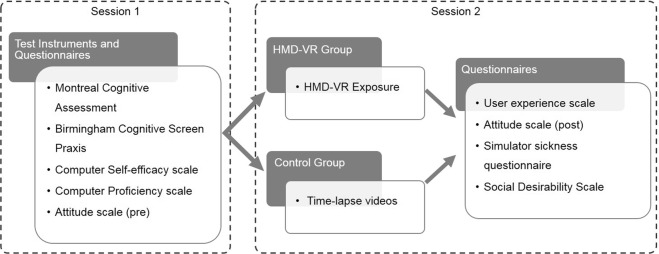Figure 2.
Schematic representation of the study protocol including the order of the test instruments and questionnaires that were administered to participants. In the first session, all participants completed the Montreal Cognitive Assessment40, the praxis scale of the Birmingham Cognitive Screen43, computer self-efficacy, computer proficiency and attitude towards HMD-VR scales. In a first recruitment phase, participants were allocated to the HMD-VR group (n = 38). In a second recruitment phase, participants (n = 38) were allocated to the control group. The two groups were matched on age, education, gender and independent living status. After exposure to HMD-VR or time-lapse videos in a second session, the user experience of the HMD-VR or time-lapse video condition was measured. Afterwards participants completed a second administration of the attitude scale and completed the simulator sickness questionnaire41. A subset of 44 participants also completed the Marlowe-Crowne social desirability scale42.

